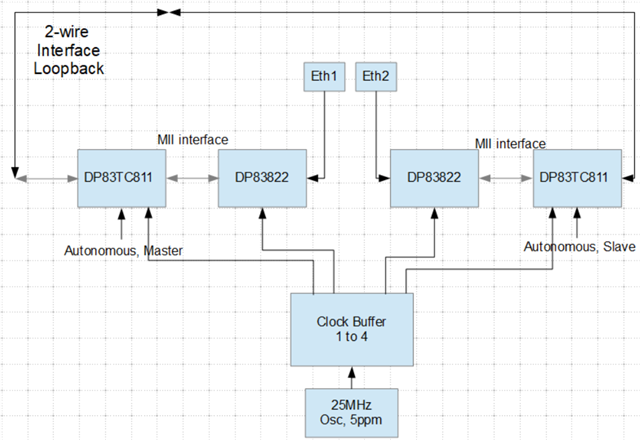Other Parts Discussed in Thread: DP83TC811
I have an application that requires data to be carried over 2-wire and had built a prototype base on the DP83TC811EVM. The board has two circuits of Ethernet PHY (DP83822) connected to DP83TC811 and shared a common clock from a 1 to 4 clock buffer driven by a 25MHz oscillator.
When I loop back the 2-wire circuit (one as master and another as slave), the two Ethernet connections are able to have throughput of ranging from 60 - 90Mbps. However, there are occassional dropping of packets when I do continuously ping across the two Ethernet connections. I tried both small packet of 64 bytes and large packet of 1024 bytes, and the ping will time out randomly, rougly around once every 15 to 20 pings.
Is this normal behaviour for the 2-wire PHY? If not what could be a possible cause of this behaviour? The 2-wire PHY as unmanaged as set a autonomous mode.



